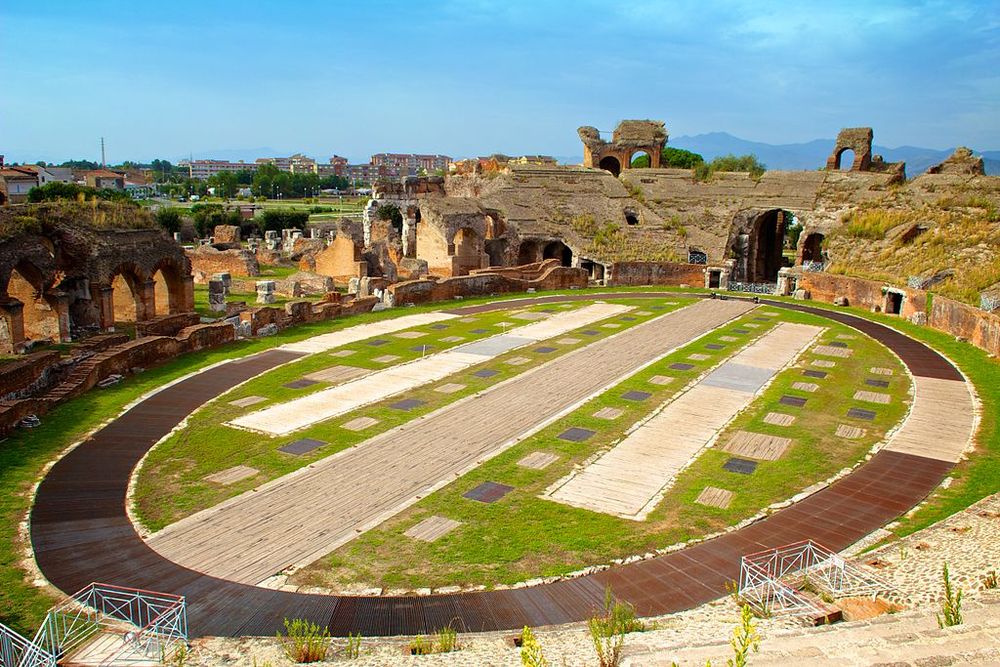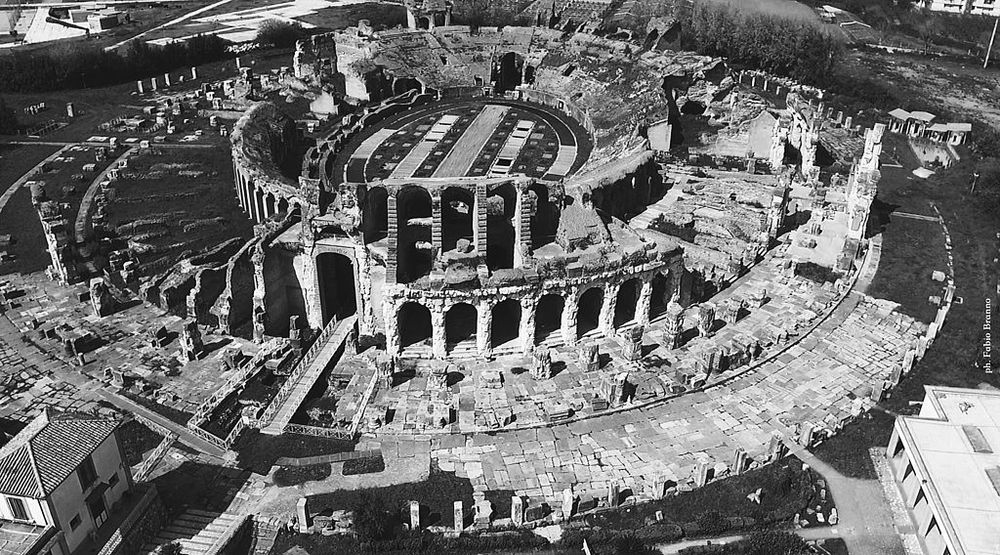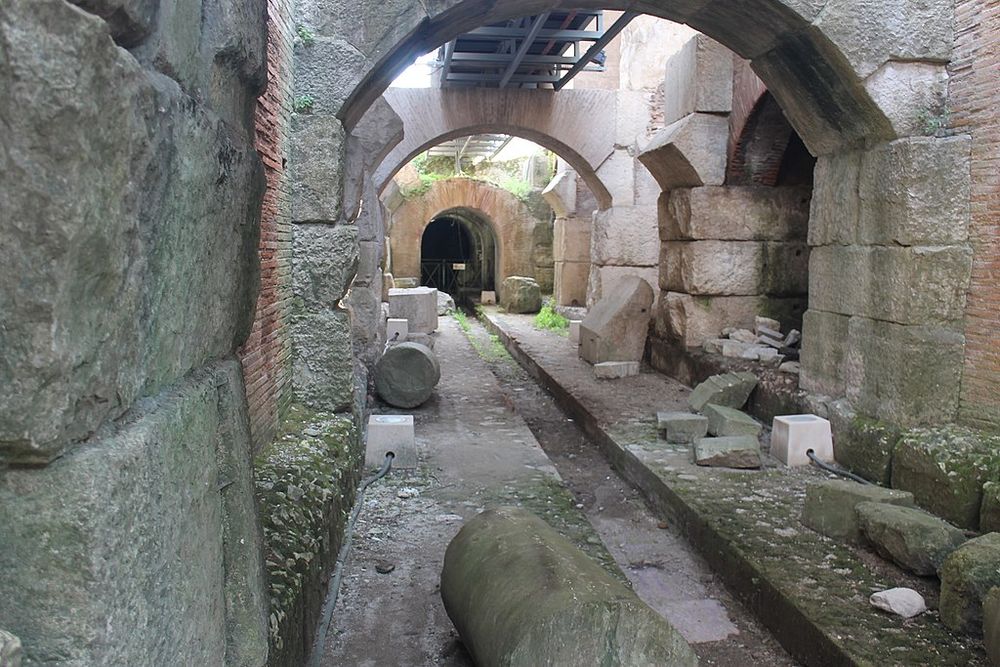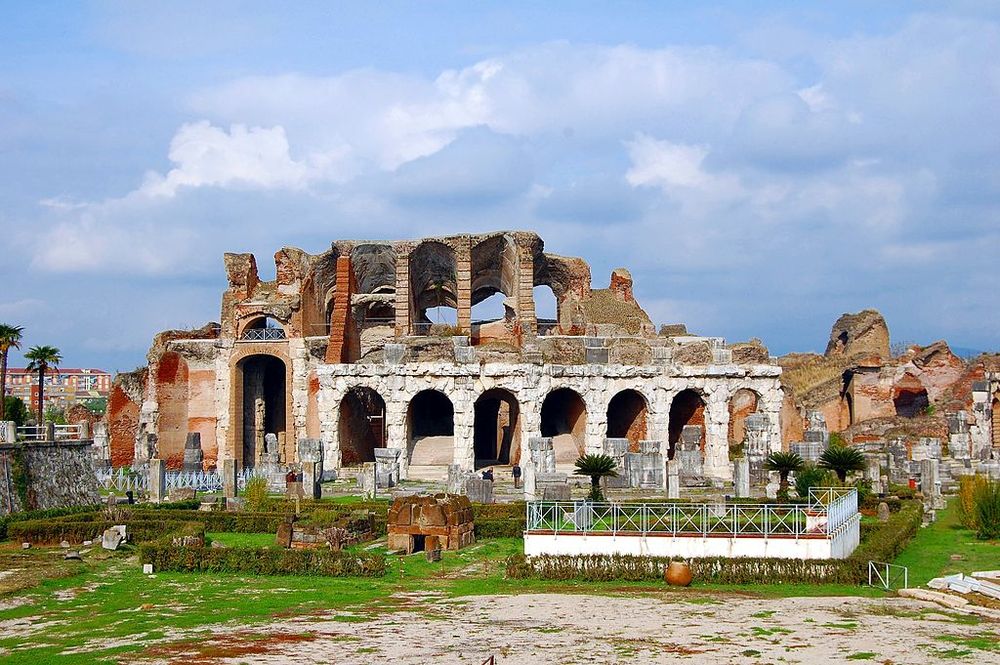Capua's Iconic Legacy: Unveiling the First Roman Amphitheater
The Amphitheater of Capua stands as a testament to the grandeur and architectural ingenuity of the ancient Roman civilization. Located in the city of Capua, Italy, it holds the distinction of being the first permanent amphitheater ever constructed in the Roman Empire. Built during the 1st century BCE, this magnificent structure played a significant role in shaping the future of entertainment and spectacle throughout the Roman world.
Capua, an ancient city in the Campania region of Italy, was known for its rich cultural heritage and its strategic location along the Appian Way, one of the most important Roman roads. The Amphitheater of Capua was erected as a grand showcase for gladiatorial contests, animal hunts, and various public spectacles. It represented a shift in Roman architectural design, which sought to provide a dedicated space for large-scale events that would captivate and entertain the citizens.
The construction of the Amphitheater of Capua was a marvel of engineering and architectural innovation. It was primarily built using locally sourced materials, such as tuff stone, bricks, and volcanic ash. The elliptical structure spanned a length of 170 meters and could accommodate an estimated 30,000 spectators. The seating arrangement was carefully designed, with different sections reserved for various social classes, ensuring a clear hierarchy within the audience.
The amphitheater featured a complex system of underground chambers, corridors, and cages that housed the gladiators, animals, and equipment required for the spectacles. The floor of the arena, known as the "harena," was made of wooden planks covered with sand to absorb blood and provide better footing for the combatants. Around the harena, a high wall acted as a barrier between the audience and the performers, ensuring the safety of the spectators while preserving the excitement of the events.
The Amphitheater of Capua quickly became a focal point of entertainment and social gathering for the people of Capua and the surrounding regions. It hosted a wide array of spectacles, including gladiatorial battles, wild animal hunts, mock naval battles, and even public executions. These events were not only meant for amusement but also served as a means to display power, reinforce social order, and cultivate the military virtues admired by the Romans.
The popularity and success of the Amphitheater of Capua led to the widespread adoption of this architectural concept throughout the Roman Empire. The design principles and features seen in Capua influenced the construction of subsequent amphitheaters, including the iconic Colosseum in Rome, which remains one of the most recognizable ancient structures to this day. The amphitheater concept became an integral part of Roman urban planning and left an indelible mark on the cultural fabric of the empire.
Despite the passage of time and the ravages of history, the Amphitheater of Capua has managed to survive to this day, albeit in a partially ruined state. It serves as a poignant reminder of the splendor and grandeur of ancient Rome, providing a glimpse into the world of gladiators and the extravagant spectacles that captivated the masses. Efforts have been made to preserve and restore the amphitheater, ensuring that future generations can continue to appreciate its historical significance.
Above Photo: Nicola D'Orta/Wikimedia
Capua's Iconic Legacy: Unveiling the First Roman Amphitheater
Photo: Fabiobranno/Wikimedia
Capua's Iconic Legacy: Unveiling the First Roman Amphitheater
Amphitheater undergrounds. Photo: Saverio.G/Wikimedia
Capua's Iconic Legacy: Unveiling the First Roman Amphitheater
Photo: jimmyweee/Wikimedia
The Amphitheater of Capua stands as a remarkable testament to the architectural brilliance and cultural impact of the Roman Empire. As the first permanent amphitheater ever constructed, it pioneered the concept of providing dedicated spaces for public spectacles and entertainment. Its influence can be seen in subsequent amphitheaters throughout the Roman Empire, and its legacy continues to resonate in the present day.
Capua's Iconic Legacy: Unveiling the First Roman Amphitheater

No comments:
Post a Comment
Note: only a member of this blog may post a comment.